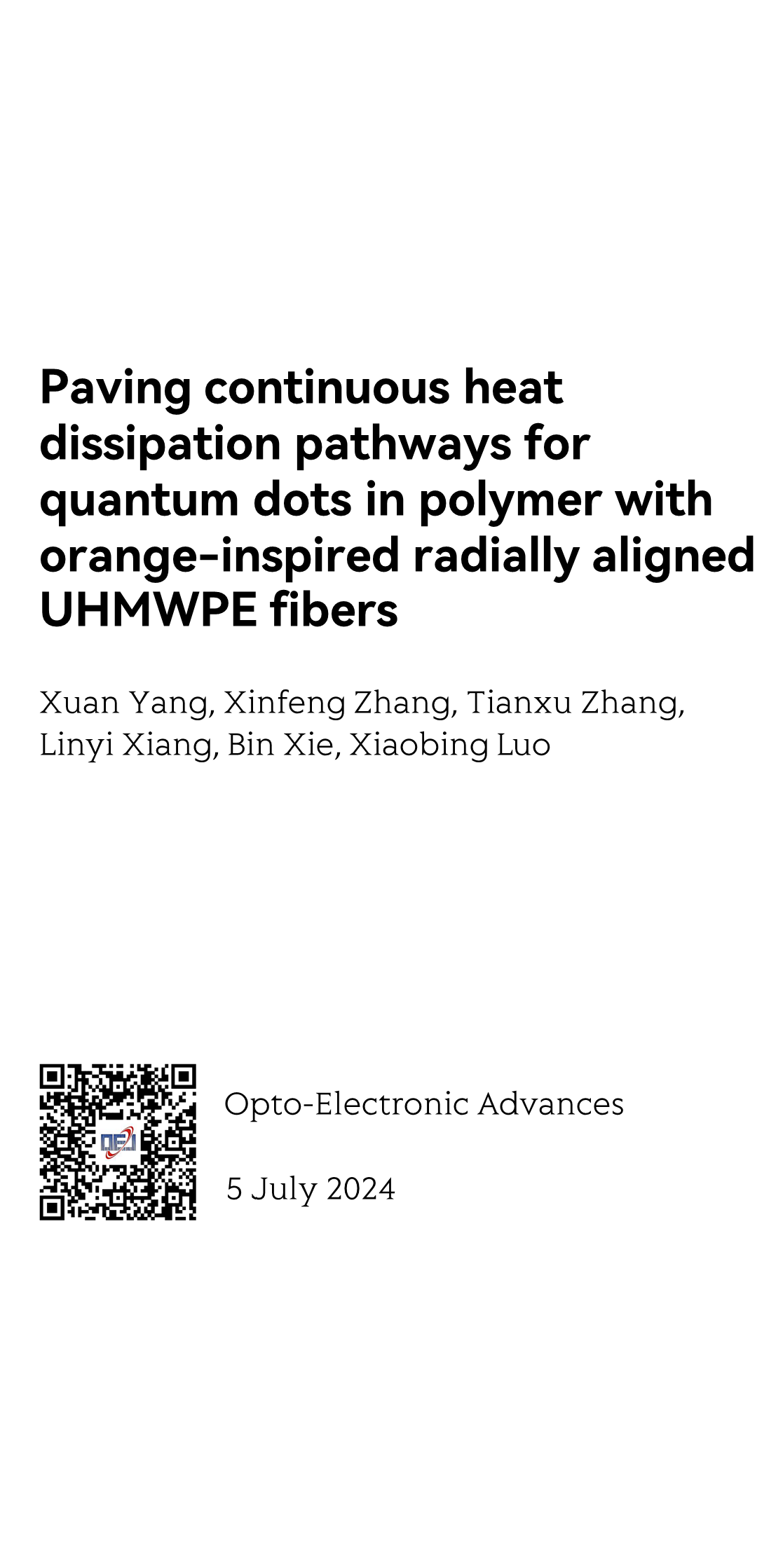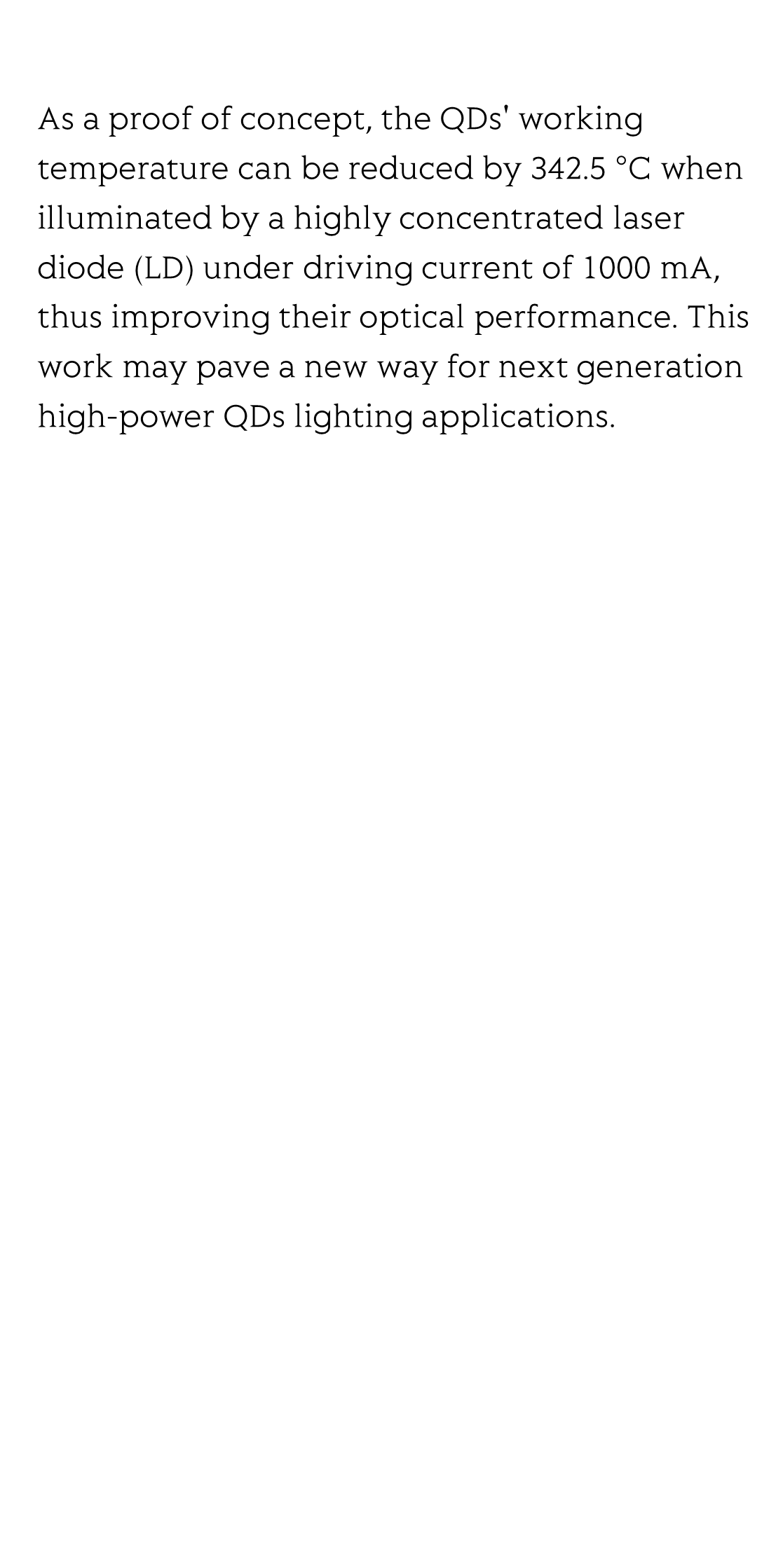(Peer-Reviewed) Paving continuous heat dissipation pathways for quantum dots in polymer with orange-inspired radially aligned UHMWPE fibers
Xuan Yang 杨烜 ¹, Xinfeng Zhang 张信峰 ¹, Tianxu Zhang 张天旭 ¹, Linyi Xiang 向霖屹 ¹, Bin Xie 谢斌 ², Xiaobing Luo 罗小兵 ¹
¹ School of Energy and Power Engineering, Huazhong University of Science and Technology, Wuhan 430074, China
中国 武汉 华中科技大学能源与动力工程学院
² School of Mechanical Science and Engineering, Huazhong University of Science and Technology, Wuhan 430074, China
中国 武汉 华中科技大学机械科学与工程学院
Opto-Electronic Advances, 2024-07-05
Abstract
Thermal management of nanoscale quantum dots (QDs) in light-emitting devices is a long-lasting challenge. The existing heat transfer reinforcement solutions for QDs-polymer composite mainly rely on thermal-conductive fillers. However, this strategy failed to deliver the QDs' heat generation across a long distance, and the accumulated heat still causes considerable temperature rise of QDs-polymer composite, which eventually menaces the performance and reliability of light-emitting devices.
Inspired by the radially aligned fruit fibers in oranges, we proposed to eliminate this heat dissipation challenge by establishing long-range ordered heat transfer pathways within the QDs-polymer composite. Ultrahigh molecular weight polyethylene fibers (UPEF) were radially aligned throughout the polymer matrix, thus facilitating massive efficient heat dissipation of the QDs. Under a UPEF filling fraction of 24.46 vol%, the in-plane thermal conductivity of QDs-radially aligned UPEF composite (QDs-RAPE) could reach 10.45 W m⁻¹ K⁻¹, which is the highest value of QDs-polymer composite reported so far.
As a proof of concept, the QDs' working temperature can be reduced by 342.5 °C when illuminated by a highly concentrated laser diode (LD) under driving current of 1000 mA, thus improving their optical performance. This work may pave a new way for next generation high-power QDs lighting applications.
Flicker minimization in power-saving displays enabled by measurement of difference in flexoelectric coefficients and displacement-current in positive dielectric anisotropy liquid crystals
Junho Jung, HaYoung Jung, GyuRi Choi, HanByeol Park, Sun-Mi Park, Ki-Sun Kwon, Heui-Seok Jin, Dong-Jin Lee, Hoon Jeong, JeongKi Park, Byeong Koo Kim, Seung Hee Lee, MinSu Kim
Opto-Electronic Advances
2025-09-25
Dual-frequency angular-multiplexed fringe projection profilometry with deep learning: breaking hardware limits for ultra-high-speed 3D imaging
Wenwu Chen, Yifan Liu, Shijie Feng, Wei Yin, Jiaming Qian, Yixuan Li, Hang Zhang, Maciej Trusiak, Malgorzata Kujawinska, Qian Chen, Chao Zuo
Opto-Electronic Advances
2025-09-25







